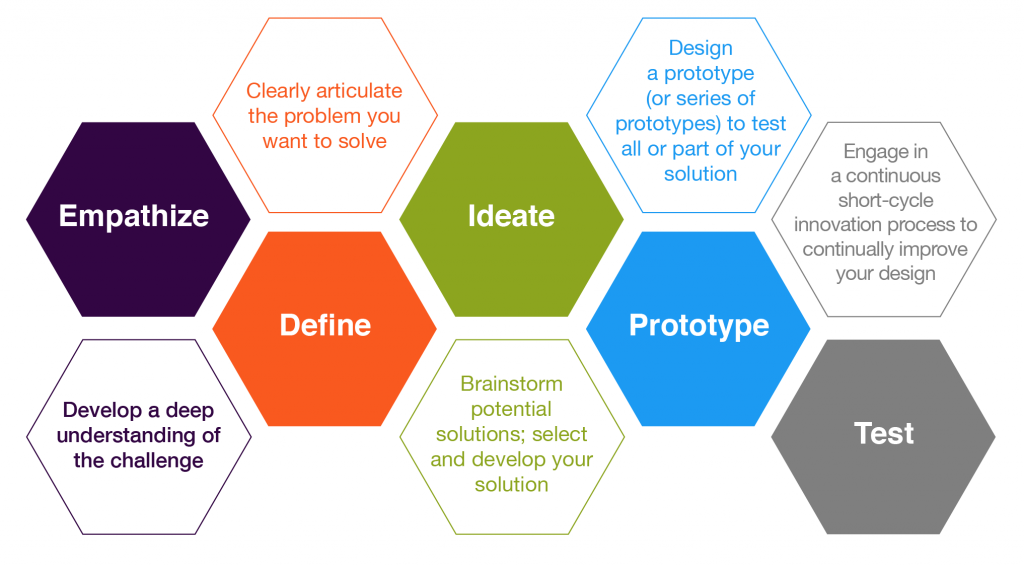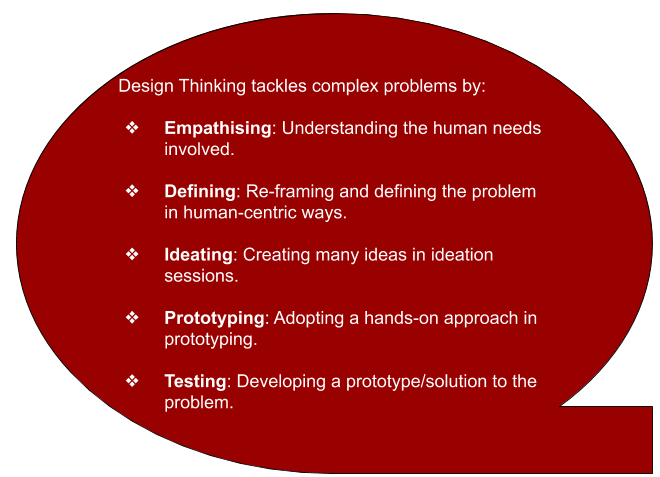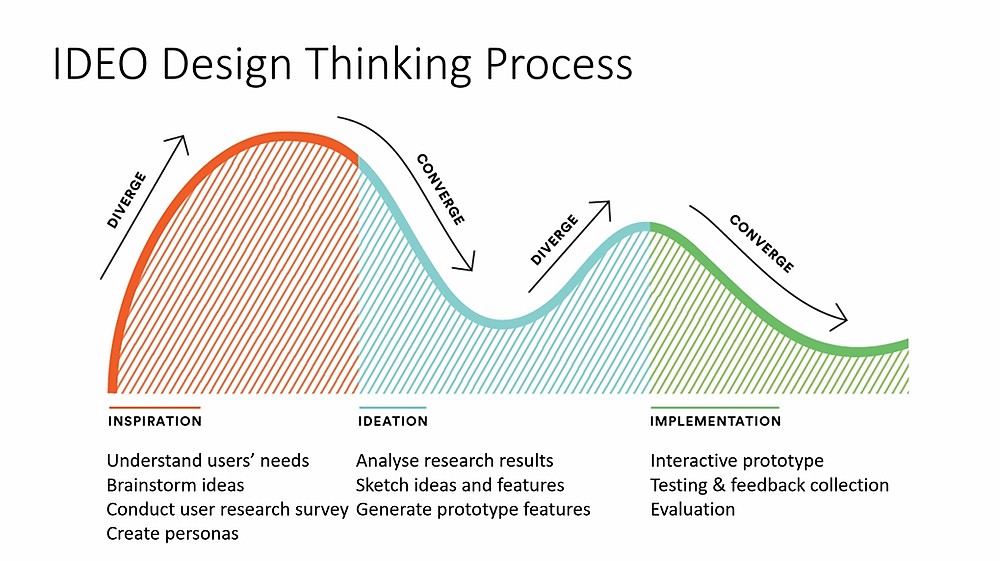Design Thinking is a method that aims to facilitate a solution-based approach in order to overcome challenges. Experts suggest that Design Thinking steps are the best method of vanquishing problems that are unanticipated, unknown, and undefined.
This process is based on the human ability to understand various patterns in order to come up with ideas that are emotionally appealing, meaningful, and functional.
Design Thinking is a distinctive solution, and in order to implement it in the right way, it is vital to partner with a web design & development company.

Design Thinking steps are primarily used for meeting various requirements using alternative and innovative options. This approach is also considered to be repetitive when it comes to problem-solving and identifying opportunities.
To arrange various requirements of the people, whether technical or business, design thinking is the quick solution. Product designers popularly use this methodology.
However, design thinking steps does not limit itself to just creating things. It is also used to decode what humans need by effectively examining the challenges in a human-centric manner.
Design thinking steps is an integral part of the design process and can be considered to be one of the most innovative web design trends for 2020
It is best to hire web developers and designers if you are interested in effectively implementing this methodology so that it aligns with your user interest.
The Definition – Design Thinking Steps
Design Thinking steps can be depicted as a master that primarily makes use of the designer’s sensibility and his methods in order to suffice human needs.
This is executed in a technologically sound manner and per business strategies that convert into customer value and market opportunities.
How is Human-Centered Design Different From Design Thinking?
The answer to this pertinent question is quite simple and easy to absorb. The peripheral and the scope of design thinking is a lot more than that of a Human-centered design. When we talk about Design thinking, it is entirely about innovation, problem-solving, and building products & services.
IDEO Design Thinking is strategic, precise, and is an efficient process. This process has a fixed goal for which it needs to come up with an innovative solution in order to address a customer need/requirement. IDEO design thinking is prevalent in areas that do not traditionally require a design.
Design thinking steps are gradually gaining popularity among digital companies. However, most of the designers aren’t trained or equipped to work in the area, and it is something that can’t be implemented in an unorganized fashion.
However, Human-centred Design is majorly about enhancing the user experience and the usability of products and services. Human-centred Design can be described as the process of building modern solutions using a design that involves human perspectives.
UI/UX designers identify with Human-centered designs.
- Human-Centered Design and Design Thinking are perfect when it comes to handling complex design phases where uncertainty is prominent.
- Both the processes are user-centric and pay huge focus on empathizing with the users.
- Human-Centered Design and Design Thinking process makes use of creative and analytical thinking throughout the design process.
Here are five different stages of design thinking that will help users apply the process effectively in order to solve complex problems.

Empathize
Empathizing is the first and foremost stage of design thinking. It has a fixed aim, that is to understand the objectives, needs and the requirements. When you are looking to build a psychological and emotional connect, you must start observing and engaging with people.
At this stage, you need to step aside assumptions and begin gathering actual information, preferences and actionable insights about the users.
Define
The second stage in the Design Thinking steps is all about defining the actual problem that needs to be solved. At this phase of the process, all the information gathered in the previous stage is analyzed and identified.
- Are there any problems/bottlenecks that the users are coming across?
- Is there a pattern to the problem?
- Is there a more significant issue that needs to be resolved? If yes, what?
Toward the end of this stage, you will be able to come up with a clear and pin-pointed problem statement in a user-centred manner. Once your problem statement is in place, it becomes easier to come up with solutions.
Ideate
Ideating is the third phase of design thinking. At this stage, the designers are all set to come up with ideas and solutions. With the solid background that you now have because of the previous two steps you, along with your team members can now start thinking out of the box in order to come up with new and innovative solutions.
This phase is more about creativity and coming up with an idea for problem-solving. Towards the end of this phase, you should have healthy ideas to embark upon further.
Prototype
Here, at the 4th phase, we can begin to get experimental in order to convert ideas into products and services. Here, you work towards building a dummy version of your product using the solutions that we ideated in the previous phases.
Prototyping is primarily focused on validating the identified solutions and in the process, highlighting any obstacle or limitations. At this stage, the answer you come up with, based on it’s working, can be revamped, enhanced or rejected.
Test
The final stage is the testing stage. However, keep in mind that your design thinking steps do not wrap up here. Once you execute the testing phase, you must introspect all the above steps once again so that you can come up with new and improved ideas that probably didn’t cross your mind at first.
Design Thinking – A Non-Linear Process
Design thinking is primarily about introspecting what is known in order to define a problem precisely and coming up with smart and suitable solutions and strategies to overcome them. However, these problems may not be visible with a basic understanding.
Design thinking is helping designers think out of the box to build new and innovative ways to solve problems.
Wrapping Up
Today, it is vital that companies adopt new and emerging technologies in order to transform digital businesses and create new value systems. Moreover, businesses find it challenging to thrive in the competition.
Design Thinking is an effective way to surpass competition while effectively tackling problems that the transmission brings up.
Good Luck!


